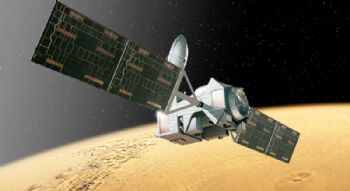
The first results from the ExoMars mission — supported by the UK Space Agency (UKSA) — have revealed the effects of a massive dust storm on the Red Planet.
Over the last year the European Space Agency’s Trace Gas Orbiter (TGO) spacecraft monitored the storm and how the
increase in dust affected the water vapour in the Mars atmosphere.
However, it did not observe the presence of methane, adding to the mystery of why other missions (like the NASA Curiosity rover) reported localised concentrations of methane, which could indicate life.
ExoMars is a two-part mission; the TGO will be joined by the UK-built Rosalind Franklin rover in 2021.
Sue Horne, the UK Space Agency’s head of space exploration, said: “ExoMars embodies the best of UK and European space science and I am delighted that Britain is one of its biggest supporters. (
www.gov.uk/government/organisations/uk-space-agency)
“This data release is the first of many on our mission to unearth the mysteries of the Red Planet.
“The results both answer questions and raise new ones, paving the way for more exciting discoveries from the Rosalind Franklin rover.”
Dr Manish Patel at the Open University, who led the UK design input for the TGO’s spectrometer system said: “The measurements we have made are very surprising.
"The methane previously detected by Earth-based telescopes, the ESA Mars Express spacecraft and the NASA Curiosity rover seems to have disappeared.
"Mars continues to confound us — the only way these results make sense with previous observations is if there is a new mechanism in the atmosphere, removing the methane at a rate far faster than thought possible.
“As always, Mars provides us with another mystery to solve.”